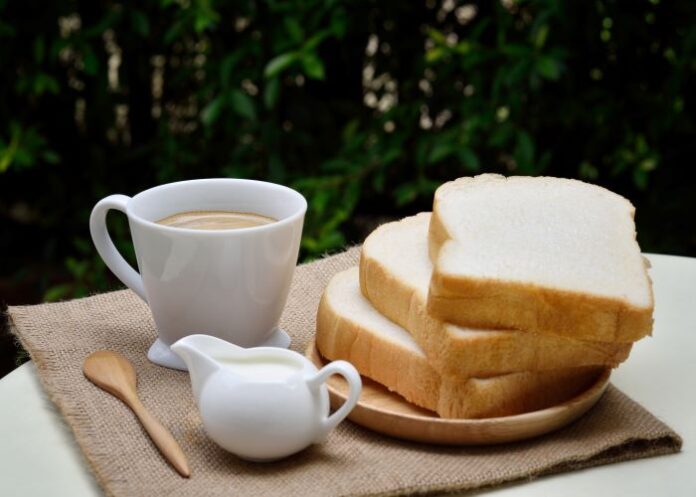A 2003 government decision to improve nutrient intake by fortifying maize meal and bread flour with vitamin A, riboflavin, niacin, pyridoxine thiamine, folic acid, iron and zinc has paid off, say SA scientists, who also found that lentils, sugar beans and split peas have the highest nutritional value per rand of any products they monitored on local shelves.
The team from the South African Medical Research Council (MRC) and the University of the Western Cape evaluated more than 100 food items from local retailers, reports Business Insider.
They said while pulses rated the highest, the lowest were fats, oils, foods high in fat and sugar, and sugary food and drinks.
Their study, published in the Journal of Nutritional Science, said the fortified staple foods, widely consumed in SA, had the best nutritional value per cost within the starchy food group.
“Starchy foods overall had the lowest energy cost … but excessive consumption of these may lead to overweight and obesity.”
Food inflation reached 12.4% in December, according to Statistics SA, way ahead of the 7.2% overall inflation rate. For oils and fats, the inflation rate was 22.4%, and for bread and cereals it was 20.6%.
“The core food basket for low-income women consists mainly of starches (maize meal, rice, cake flour, bread), white sugar, vegetable oil, sugar beans and chicken, tea and condiments, and is not nutritionally balanced,” say the researchers.
“Low-income groups often rely on cheaper, energy-dense foods high in saturated fats, trans fats and added sugar, increasing the risk of becoming overweight/obese and developing diet-related non-communicable diseases (NCDs), so food prices are a major contributor to inadequate diets and malnutrition.”
Rating food
The researchers created a 116-item food checklist based on Health Department dietary guidelines which included products commonly consumed in poor households as well as raw food, prepared food and fortified products.
They used the MRC food composition database to evaluate the nutritional value of the amount of each food required to provide 100 kilocalories of energy.
Their analysis focused on protein, fibre and seven nutrients that are low in the diet of South African adults: vitamin A, vitamin D, folate, iron, zinc, calcium and vitamin B6.
“Pulses had the best nutritional value per cost across all food groups,” said the team led by nutritionist Samukelisiwe Madlala from the MRC non-communicable diseases research unit.
“These foods are good sources of carbohydrates, protein, fibre and several micronutrients including iron, magnesium and potassium. Pulses may be beneficial in preventing and managing NCDs as they can potentially reduce the risk of obesity and certain cancers.
“Since pulses have a much lower cost per 100 kcal in comparison with animal protein sources and have a higher nutrient density relative to cost, they would be a good protein substitute and would be a more affordable choice for low-income consumers.”
After pulses and fortified starches, the foods offering the best nutrition value per rand are dairy products, vegetables and fruits, and the group containing fish, chicken, meat and eggs, particularly chicken giblets, eggs, pilchards and low-fat fish.
Vegetables and fruits – particularly carrots, butternut and orange-fleshed sweet potato –had the highest nutrient density of the foods tested, but the researchers say: “Generally, vegetables and fruits are expensive. Although VAT zero-rated, cost prevents consumption of these foods among low-income households.
“The South African population consumes less than half of the World Health Organisation recommended daily intake of 400g for the prevention of cardiovascular diseases and some types of cancers. Low-income consumers are concerned about getting the most kilojoules per unit cost, and it may therefore be difficult to advise them to eat more vegetables and fruits.”
Study details
Nutrient density and cost of commonly consumed foods: a South African perspective
Samukelisiwe S. Madlala, Jillian Hill, Ernesta Kunneke and Mieke Faber.
Published in the Journal of Nutritional Science on 25 January 2023
Abstract
Food-based dietary guidelines promote consumption of a variety of nutritious foods for optimal health and prevention of chronic disease. However, adherence to these guidelines is challenging because of high food costs. The present study aimed to determine the nutrient density of foods relative to cost in South Africa, with the aim to identify foods within food groups with the best nutritional value per cost. A checklist of 116 food items was developed to record the type, unit, brand and cost of foods.
Food prices were obtained from the websites of three national supermarkets and the average cost per 100 g edible portion was used to calculate cost per 100 kcal (418 kJ) for each food item. Nutrient content of the food items was obtained from the South African Food Composition Tables. Nutrient density was calculated using the Nutrient Rich Food (NRF9.3) Index. Nutrient density relative to cost was calculated as NRF9.3/price per 100 kcal. Vegetables and fruits had the highest NRF9.3 score and cost per 100 kcal.
Overall, pulses had the highest nutritional value per cost. Fortified maizemeal porridge and bread had the best nutritional value per cost within the starchy food group. Foods with the least nutritional value per cost were fats, oils, foods high in fat and sugar, and foods and drinks high in sugar.
Analysis of nutrient density and cost of foods can be used to develop tools to guide low-income consumers to make healthier food choices by identifying foods with the best nutritional value per cost.
See more from MedicalBrief archives:
‘Junk’ plant-based diets pose health risks
Obese, overweight South Africans costing the country billions of rands
DoH tells Parliament: Thousands of SA’s children have died of malnutrition
High prevalence of vitamin D deficiency in African populations
New diagnostic platform for dieticians a first for SA

